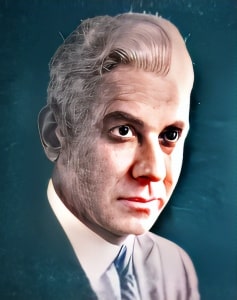 Irving Cummings, born on October 9, 1888, in New York City, was a multifaceted American film director and actor who made a substantial impact during the early years of American cinema.
Irving Cummings, born on October 9, 1888, in New York City, was a multifaceted American film director and actor who made a substantial impact during the early years of American cinema.
His versatile contributions spanned the transition from silent films to the advent of sound, and he left an indelible mark on the industry. While his name may not be as widely recognized today as some of his contemporaries, Irving Cummings’ career is celebrated for its adaptability and lasting influence.
Cummings embarked on his journey in the entertainment industry during the early 20th century, a time when the film industry was still in its infancy. Silent films reigned supreme, requiring actors to convey emotions and narratives primarily through facial expressions and physical movements. Cummings, with a background in theater, adapted seamlessly to this medium, captivating audiences with his performances.
One pivotal moment in Irving Cummings’ career was his transition from acting to directing. After establishing himself as an actor, he discovered his passion for the creative aspects of filmmaking. His experience in front of the camera provided valuable insights into storytelling, and he leveraged this knowledge to become a successful director.
As a director, Cummings worked on a diverse range of films, spanning various genres and styles. His versatility allowed him to engage with a wide array of narratives, showcasing his adaptability and dedication to his craft. His filmography included comedies, dramas, and musicals, highlighting his ability to bring out the best in his cast and crew.
During the transition from silent films to sound films in the late 1920s, many directors faced the challenge of adapting to the new era. Cummings successfully navigated this transition, demonstrating his ability to remain relevant in the evolving film industry. His expertise in both silent and sound films made him a sought-after director, and he continued to contribute to the art of filmmaking.
One of Cummings’ notable contributions was his involvement in the 1920 silent film “ The Saphead.” Directed by Herbert Blaché and Winchell Smith, this comedy-drama marked a turning point in the career of actor Buster Keaton. The film represented Keaton’s transition from a supporting player to a leading actor, and Cummings played a significant role in this milestone. His understanding of the medium and his ability to direct Keaton in his first starring role demonstrated his adaptability and skill as a director.
While Irving Cummings’ name may not be as widely recognized today as some of the leading actors or directors of his time, his contributions to early American cinema are a testament to his talent and dedication. His work in the silent film era and his successful transition to sound films underscore his versatility and lasting impact on the industry.
In conclusion, Irving Cummings was a versatile American film director and actor who made significant contributions to the early years of American cinema. His transition from acting to directing showcased his adaptability and commitment to the craft of filmmaking. Although his name may not be as widely remembered today, his work in the early days of cinema remains a valuable part of the history of early Hollywood. Irving Cummings’ contributions continue to inspire future generations of filmmakers, and his legacy endures as an integral part of the early days of the film industry.
Loading live eBay listings...




